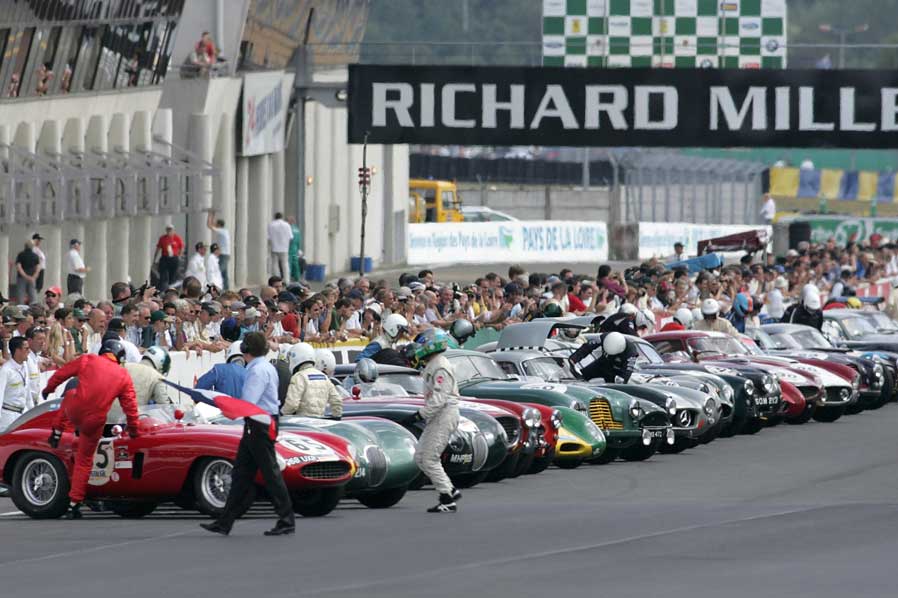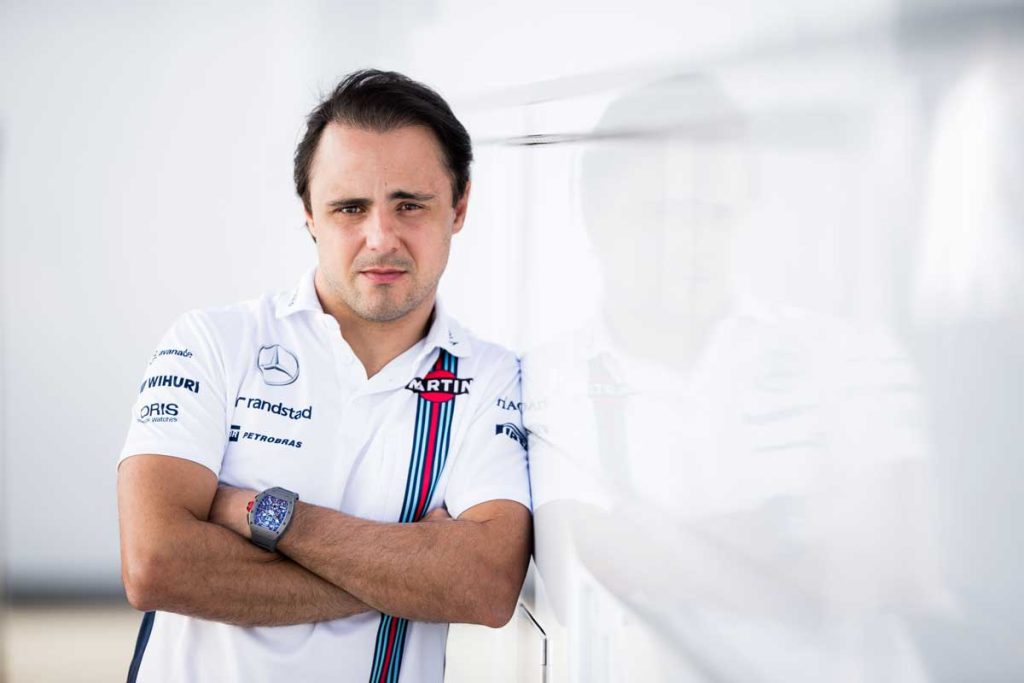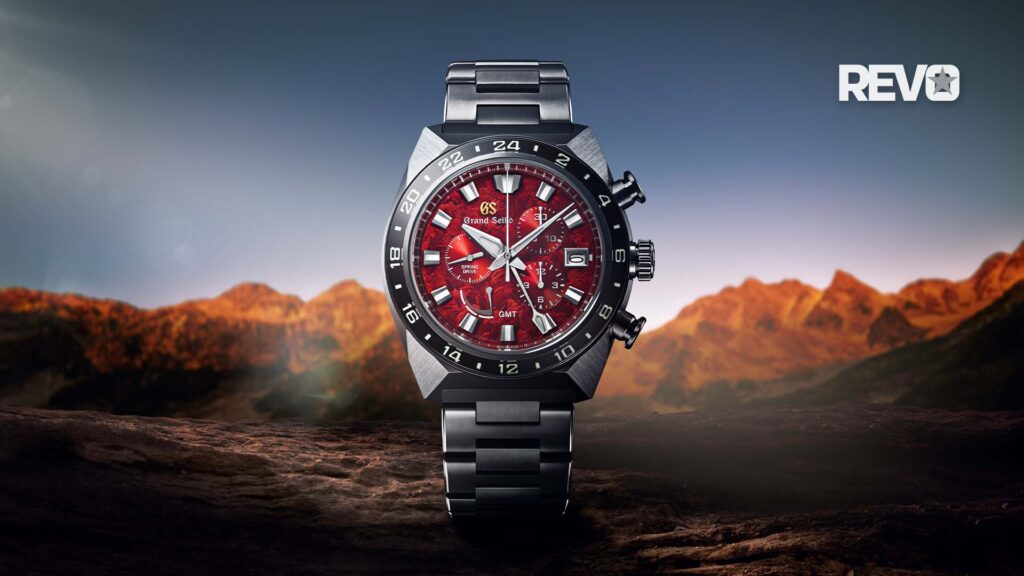Personalities
Richard Mille — The Father of Modern Watchmaking

Flag off at the Le Mans Classic 2006 (Image: lemansclassic.com)
Who else would create the world’s first wristwatch with a carbon-fiber baseplate for an F1 driver Felipe Masa to wear on the racetrack? Despite several horrendous crashes, his watch continued to work perfectly! Or strap a timepiece to the wrist of Bubba Watson, the golfer with the longest and most powerful drive in the game? Who else would introduce materials previously associated only with the most innovative aspects of aerospace into the watch, and bring unparalleled shock-resistance, lightness and rigidity to every component of the watch, at the same time introducing architectural geometry and forms derived from F1 cars?

Felipe Massa of Williams and Brazil during day one of F1 winter testing at Circuit de Catalunya on March 1, 2016 in Montmelo, Spain. On his wrist, the Richard Mille RM 011 Automatic Flyback Chronograph (Photo by Peter J Fox/Getty Images)
This is the story of how he totally and irrevocably changed the game and became universally recognized as the father of modern watchmaking.
The Genesis of a Global Vision
“Bonjour, Richard Mille,” he says, his distinct baritone hits me like a cosmic cannon shot. It’s a sonic boom over the desert sky. It bounces and careens off the walls, encapsulating the man, the myth, the legend with the same fierce, compact economy and force of will as René Descartes’ cogito ergo sum.
But who is Richard Mille? What’s the man behind the machine all about? He’s a gentleman of exquisite refinement and a man of enormous presence. So, as he crosses any threshold and makes that incredible pronouncement of self, “Bonjour, Richard Mille”, the room literally resonates with his energy. Funnily, the only time he was reticent about wielding his mighty name was when we were stopped at the gates of Le Mans by an overeager security guard. Behind him, an enormous “Richard Mille” banner soared overhead. The guard eagerly asked, “Sir, may I ask your name and the nature of your business at Le Mans?” Mille smiled and intoned, “My name is Richard and I am in the business of passion, my friend — always passion!”
While Mille is now a fixture in the pantheon of Swiss horology’s megawatt superstars, he is unique in achieving this status by working in almost total opposition to its traditions. The late Nicolas G. Hayek borrowed from Einstein when he was once asked where he would like to die. His response was, “Switzerland, because everything there happens 10 years too late.” And it’s true, in horology’s hometown where Mont Blanc is reflected in the ever-placid face of Lake Geneva, time is ironically at a standstill. Progress there was the result of incremental creeps forward, until Mille exploded onto the scene, bending the space-time continuum and catapulting the entire industry light years ahead.
Mille states, “I wanted to start clean from a blank slate and create something entirely divorced from the past — something new that had never been seen before.” For Mille, the watch industry was trapped in the “ghetto” of its own mindset. He explains, “Wanting to do something new was totally unheard of at that time. You see, what are essentially being made today are replicas of watches from the past. It would be the equivalent of Ferrari constantly remaking replicas of cars it created 50 years ago. If this happened, the evolution of the auto industry would totally stop. In art, architecture and performance motorsports, imagination, evolution and innovation are fundamental to their lifeblood. It was my mission to inject this kind of new energy into watchmaking.”
Says Mille, “Based on the decision-making process I made when I created my first watch, I should have fired myself. You see, every time I came to a juncture where I could choose between lower-cost alternatives or a more expensive extreme, I always went for the extreme. Everyone told me I was committing commercial suicide.” But as a consequence, Mille describes the creation of his very first watch, the RM 001, as a work of absolute pleasure for him.
Amazingly, despite its staggering price tag of $135,000 dollars — at the time twice that of the next most expensive tourbillon by Breguet — and despite the fact that Richard Mille was an all-new brand, the very first RM 001 sold in less than half an hour. Says Mille, “I started with the shop Chronopassion in Paris. The first piece arrived in this boutique at about 11.00a.m. and by 11.30a.m., it was sold. The owner of Chronopassion, Laurent Picciotto, called me and said, ‘I need another one.’ I couldn’t believe it. Picciotto recalls the customer who had came in to buy another watch and walked out with a Richard Mille on his wrist, ‘When I told him the price the guy was really mad. He was shouting and cursing at me all the way as he left and walked down the street.’ He said, ‘You are a bastard. Why did you show me this watch? It is so expensive but so beautiful that I had to buy it!’”










